George and Shari Fine collection
Contains pre-war photographs of the Fingerhut family (George Fine's family) from Siauliai, Lithuania, and of the Marmor family (Shari Fine's family) of Bistrita, Romania. Includes postwar identification cards issued to the donors and immigration paperwork documenting Shari Marmor's immigration to Canada. Also includes playbills, posters, songbooks, and other materials documenting Yiddish theatrical productions in the Feldafing displaced persons camp, in which Shari Marmor performed. Some materials, including a Passover Haggadah, are from the Foehrenwald DP Camp. Sari Sheindl Marmor was born on April 1, 1927, in Bistrita, (Bistrița-Năsăud), Romania. Her parents, Salomon and Ita Karpeles, owned a general store. Shari had six siblings: Josef, b. 1912, Hershl, b.1922, Ester, b.1924, Chaya (Helen), b.1925, Itzhak, b. 1929, and Shmaye, b.1932. Hungary was under the influence of Nazi Germany throughout the 1930s and in November 1940, they joined the Axis Alliance. Racial laws, much like Germany’s Nuremberg laws, were enacted; Jews, who had been full citizens of Hungary since 1867, were stripped of their civil rights and excluded from many professions. Jewish males were obligated to serve in forced labor battalions. After Hungary entered the war in 1941, most of these battalions were involved in dangerous war-related construction work under brutal conditions. In 1943, Shari’s brother, Josef, was taken for a forced labor brigade; her brother, Hershl was taken in 1944. In March 1944, the Bistrita Jews were forced into a ghetto. And in April, the family was deported to Auschwitz-Birkenau death camp. They were held for a while in an open field, then she, Chaya, and Ester were separated from her parents and youngest brother. The girls were selected for forced labor and told to go right; her parents and brother were selected for death and told to go left. Sari was tattooed with number A18731. They were assigned to Birkenau IIb near the Kanada warehouse, where the property of the victims was sorted for shipment to Germany. The sisters were transferred to Płaszów concentration camp, but later were returned to Auschwitz block 36. In September 1944, Shari was transferred to a camp near Stuttgart, where she worked in the machine shop of an underground Luftwaffe Nachschublager [Air Force supply depot]. In March 1945, the camp was evacuated and the prisoners were forced on a death march. They were liberated by the United States Army near Füssen, Germany on April 29, 1945. Shari and her sisters were taken to the Feldafing displaced persons camp, where Sari was a member of a Yiddish and Hungarian theater group. All of Shari’s siblings, except for Shmaye, survived the war. In September 1948, she sailed on board the SS Samaria to Quebec, Canada. She met and married George Fine (Getzel Fingerhut), in Montreal, Canada, in 1951. George, originally from Lithuania, had survived several labor camps, Dachau concentration camp, and a death march during the Holocaust. Getzel Jurgis Fingerhut (George Fine) was born on December 24, 1922, in Siauliai, Lithuania. His father, Josef, b. 1893, was a certified locksmith, as well as a professional skater and ballroom dancer, who had served in the German Navy on a mine sweeper during World War I (1914-1918). His mother, Miriam Geselsohn, owned a delicatessen. He had one brother, Eliahu, born in August 1927. George was enrolled at Polytechnic Engineering College in Kovno, Lithuania, during the period from June 1940-May 1941 when Lithuania was annexed by the Soviet Union. When Germany declared war on the USSR and invaded Lithuania in June 1941, George returned to join his family. The Lithuanians had carried out violent riots against the Jewish population before and after the German invasion. Now they joined with the Germans Einsatzgruppen [mobile killing squads] in murdering thousands of Jews. In August 1941, George's family was forced into the Siauliai ghetto, which was transformed into a concentration camp in September 1943. George was sent to the Linkaiciai labor camp, where he unloaded ammunition for the Wehrmacht. Later he was transferred to Baciunai labor camp to work mining peat for fuel the electric power plant. In early 1944, he worked in the outskirts of Siauliai at Heeres-Kraftfahr-Park 562, a Wehrmacht military vehicle repair depot. On July 21, 1944, the Germans deported the remaining Jews from the ghetto to Stutthof concentration camp. George’s father made sure his two sons stayed together, and in early August 1944, the three of them were transferred to Kaufering Camp 10, in Utting near Dachau, where George worked repairing trains and operating the diesel shovel. His paternal uncle, Lejbl, was in the same group. Most of the otehr inmates were also from George's home town, Siauliai. In April 1945, the prisoners were forced on a death march as the camp was evacuated. They were used as a shield to protect the German guards from Allied bombing. The United States Army liberated them on April 30, 1945, near Wolfranhausen, near Munich, Germany. His mother had died during the evacuation of Stutthof. George, his father, brother, and uncle were settled in the Feldafing displaced persons camp. George eventually returned to school at Polytechnic Engineering College in Munich. His brother, Eliahu, attended dental school. In 1947, Josef remarried a woman he knew before the war, and emigrated to Montreal, Canada. In April 1949, George left from Bremerhaven for Montreal, aboard the SS Samaria. He married Sari Marmor in 1951. Sari, originally from Romania, was a survivor of Auschwitz-Birkenau concentration camp, a Hasag slave labor camp, as well as a death march. Josef passed away, age 81, in 1974.
- EHRI
- Archief
- us-005578-irn548833
- Canada--Emigration and immigration.
- Haggadah.
- Fine, Shari Marmor.
Bij bronnen vindt u soms teksten met termen die we tegenwoordig niet meer zouden gebruiken, omdat ze als kwetsend of uitsluitend worden ervaren.Lees meer



